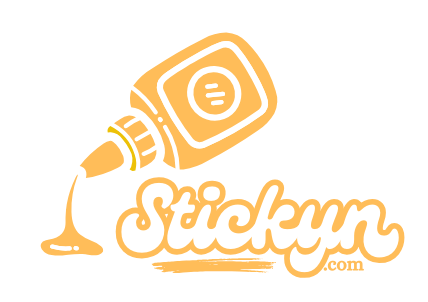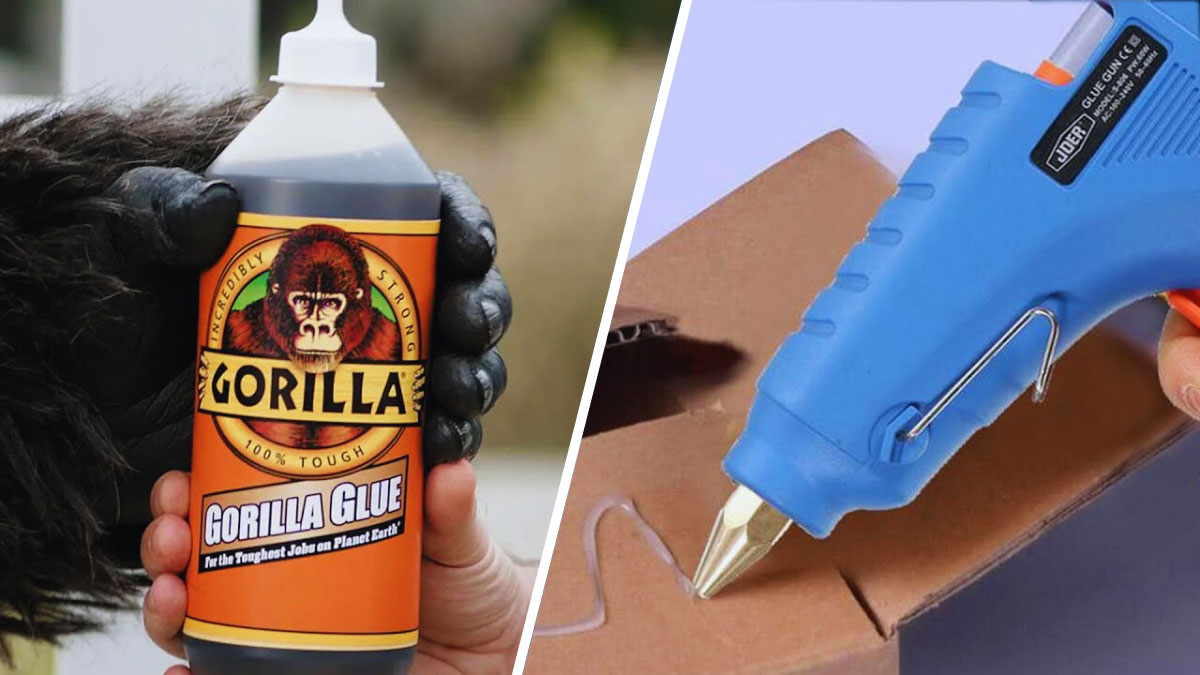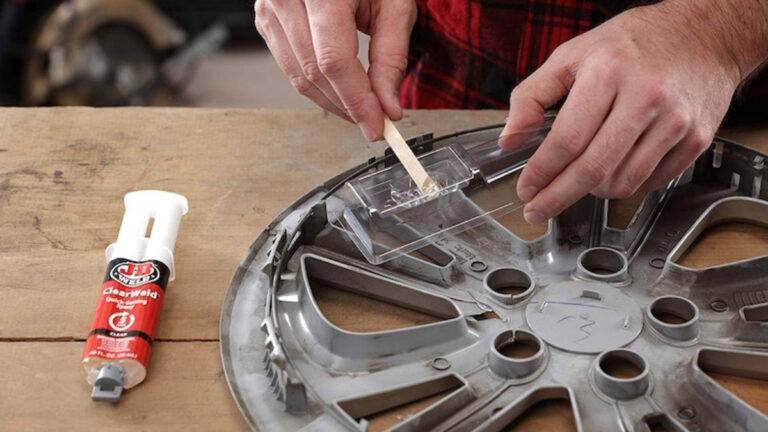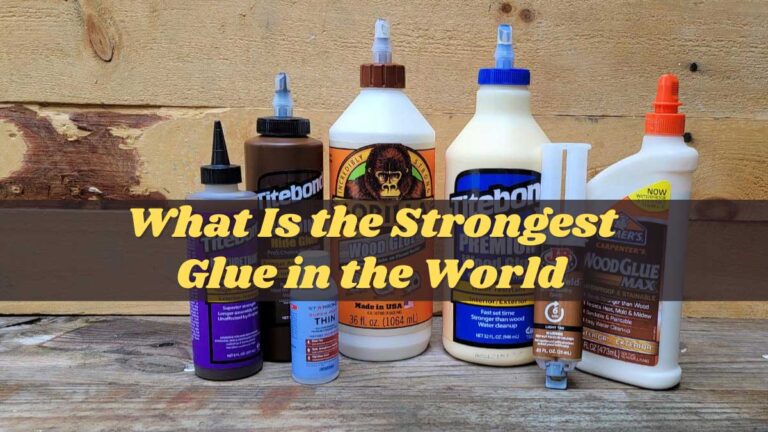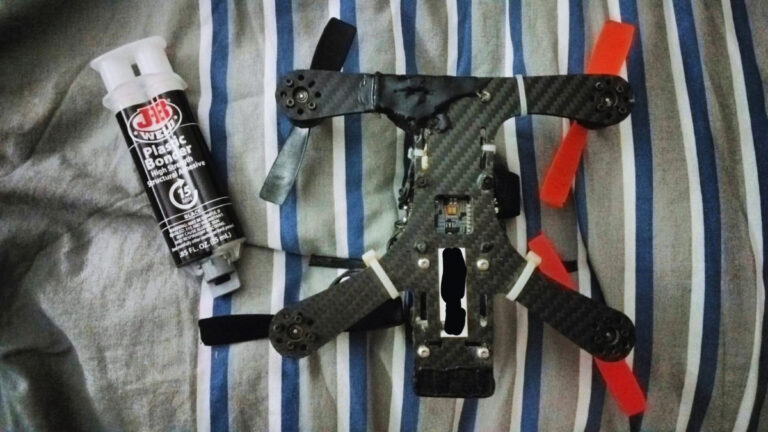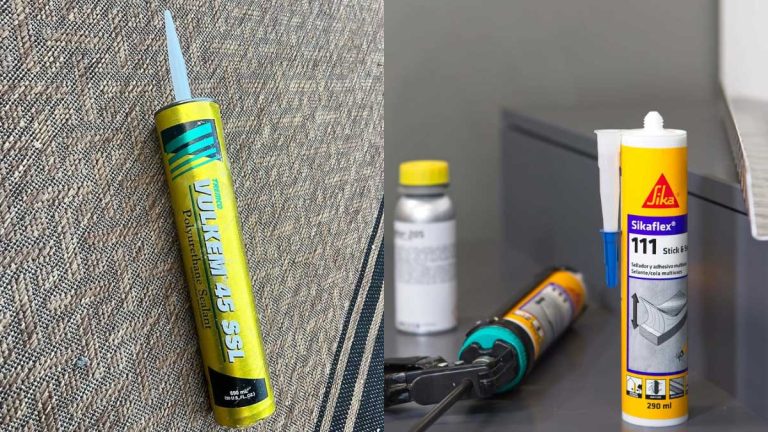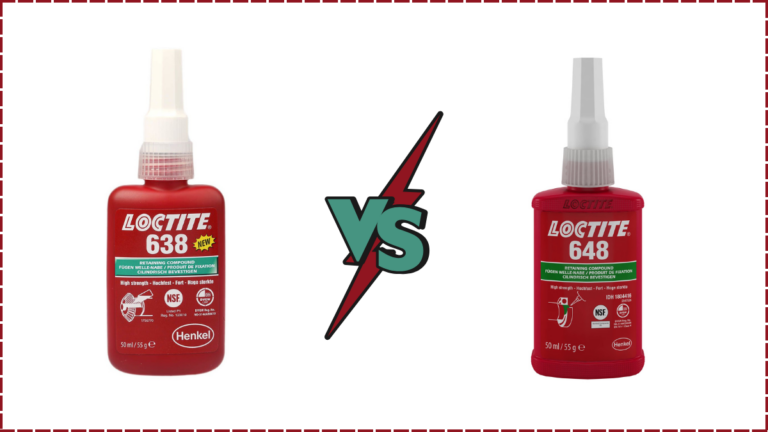Hot Glue vs Gorilla Glue: Which is Best for Your DIY Projects?
When it comes to tackling DIY projects or quick fixes around the house, choosing the right adhesive can make all the difference. Two popular options you might consider are hot glue and Gorilla Glue, each with its own set of strengths and weaknesses. Understanding which one suits your needs best can save you time and frustration.
Hot glue is often praised for its quick-drying properties and ease of use, making it a go-to for crafting and temporary repairs. On the other hand, Gorilla Glue is known for its incredible strength and versatility, capable of bonding a wide range of materials. Whether you’re a seasoned DIYer or just starting out, knowing the key differences between these adhesives will help you make an well-informed choice.
Key Takeaways
- Quick-Drying vs. Strong Bonding: Hot glue dries almost instantly and is perfect for quick fixes and crafting, while Gorilla Glue takes longer to set (1-2 hours) and provides a much stronger, durable bond suitable for heavy-duty projects.
- Ease of Use and Accessibility: Hot glue guns are user-friendly and ideal for beginners, whereas Gorilla Glue requires more careful handling and moisture to activate, making it slightly more complex.
- Material Compatibility: Hot glue works well with lightweight, porous materials like paper, fabric, and foam but is less effective on glass and metal. Gorilla Glue is versatile, bonding reliably with a wide range of materials, including wood, metal, ceramics, and more.
- Applications and Use Cases: Hot glue excels in arts and crafts, small repairs, and projects needing immediate adhesion. Gorilla Glue is best for furniture repairs, outdoor applications, and projects that require long-term strength and durability.
- Cost Considerations: Hot glue is generally cost-effective and cheaper compared to Gorilla Glue, which tends to be more expensive but offers superior strength and versatility.
- Environmental Suitability: Gorilla Glue is water-resistant and ideal for both indoor and outdoor use, including wet or humid conditions, whereas hot glue is better suited for indoor, temporary projects.
Understanding The Basics
Selecting the right adhesive for your DIY projects ensures optimal results. Hot glue and Gorilla Glue are two popular options, each with unique characteristics.
What Is Hot Glue?
Hot glue is a type of adhesive used in a hot glue gun. Here’s a detailed breakdown:
- Application: Hot glue sticks are heated and melted in a glue gun, making the glue ready to apply.
- Drying Time: Hot glue dries almost instantly, providing a swift bonding solution.
- Versatility: You can use hot glue on paper, fabric, foam, and some plastics, but it’s less effective on glass and metal.
- Strength and Durability: Hot glue isn’t as durable as some adhesives. It’s best for projects that don’t require a strong, long-lasting bond.
- Ease of Use: Hot glue guns are simple to operate, making them suitable for beginners.
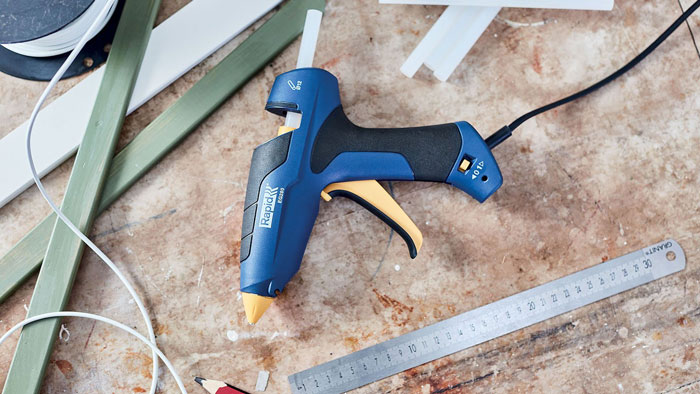
What Is Gorilla Glue?
Gorilla Glue is an adhesive known for its strength and versatility. Here are the key points:
- Application: Gorilla Glue is applied directly from its container and needs moisture to activate the bonding process.
- Drying Time: Gorilla Glue takes approximately 1-2 hours to set and 24 hours to cure fully, making it ideal for projects where time for setting and curing is available.
- Versatility: Gorilla Glue bonds well with a variety of materials including wood, stone, metal, ceramic, foam, glass, and more.
- Strength and Durability: It’s highly durable, providing a strong, lasting bond suitable for heavy-duty projects.
- Ease of Use: While slightly more complicated than hot glue, Gorilla Glue is user-friendly with clear instructions for application.
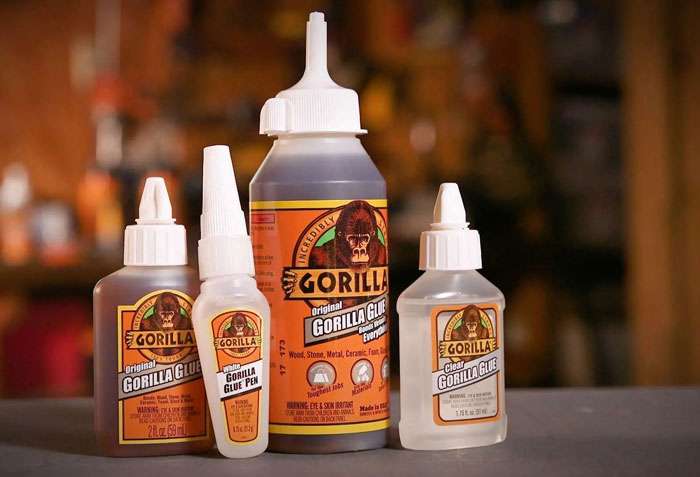
| Feature | Hot Glue | Gorilla Glue |
|---|---|---|
| Application | Melted in glue gun | Direct application with moisture |
| Drying Time | Almost instant | 1-2 hours to set, 24 hours to cure |
| Versatility | Works on paper, fabric, foam | Works on wood, stone, metal, ceramic, foam, and more |
| Strength | Less durable | Highly durable and strong |
| Ease of Use | Easy for beginners | Moderate difficulty |
Understanding these key points helps you decide which adhesive suits your project’s requirements. Use the comparison table as a quick reference when selecting between hot glue and Gorilla Glue.
Key Differences
Understanding the main differences between hot glue and Gorilla Glue helps you choose the right adhesive for your project. Key factors include composition, adhesion strength, drying time, and versatility.
Composition
- Hot Glue: Typically made from thermoplastic adhesives such as ethylene-vinyl acetate (EVA) or polyethylene. These adhesives melt when heated and are applied using a hot glue gun.
- Gorilla Glue: Composed of polyurethane. It reacts with moisture to form a strong, durable bond, making it versatile for many applications.
Adhesion Strength
- Hot Glue: Provides a quick bond, but it’s less durable. Ideal for porous materials like:
- Paper
- Fabric
- Foam
- Gorilla Glue: Known for high strength and durability. Suitable for demanding applications requiring a strong bond, capable of withstanding significant stress and weight.
Drying Time
- Hot Glue: Sets almost instantly, usually within 10-30 seconds. This quick-drying nature is perfect for projects requiring immediate adhesion.
- Gorilla Glue: Takes longer to set, requiring about 1-2 hours, with full curing in 24 hours. This longer drying time results in a stronger and more resilient bond.
- Hot Glue: Versatile for lightweight materials and temporary repairs. It’s less effective on non-porous surfaces like:
- Glass
- Metal
- Gorilla Glue: Highly versatile. Works well with a broad range of materials, including:
- Wood
- Metal
- Ceramics
Below is a table summarizing key differences between Hot Glue and Gorilla Glue:
| Feature | Hot Glue | Gorilla Glue |
|---|---|---|
| Composition | Thermoplastic (EVA, PE) | Polyurethane |
| Adhesion | Quick, less durable | High strength, durable |
| Drying Time | 10-30 seconds | 1-2 hours (24 hours cure) |
| Versatility | Lightweight materials | Broad range |
| Ideal For | Crafting, temporary fixes | Heavy-duty projects |
Choosing the right adhesive depends on your specific needs. For quick, temporary bonds with lightweight materials, hot glue is efficient. For durable and long-lasting bonds across various materials, Gorilla Glue is the better option.
Applications and Use Cases
When choosing between hot glue and Gorilla Glue, understanding their applications can make your projects more efficient and successful. Each adhesive excels in specific situations, ensuring optimal performance based on your requirements.
When to Use Hot Glue
Hot glue is a versatile adhesive that provides immediate bonding for various projects. Its quick-drying nature and ease of use make it ideal for numerous applications.
Quick Bonding
Hot glue dries almost instantly, making it perfect for projects needing immediate adhesion. You’ll find it beneficial in:
- Arts and crafts
- Small repairs around the house
- Applications requiring a fast bond
Porous Materials
Hot glue works exceptionally well on porous materials. It melts into the surface, forming a solid bond. Suitable materials include:
- Paper
- Fabric
- Foam
Crafting and DIY Projects
For hobbyists and DIY enthusiasts, hot glue guns are indispensable tools. They offer fast drying times, allowing you to make quick adjustments. Common uses include:
- Scrapbooking
- Ornament making
- Jewelry assembly
Temporary Fixes
Hot glue is ideal for temporary repairs that don’t need to withstand heavy stress. Examples include:
- Securing loose threads
- Fixing minor items
- Attaching lightweight components
When to Use Gorilla Glue
Gorilla Glue stands out for its strength and durability. It’s perfect for projects where your bond must endure heavy loads and different environmental conditions.
Strong and Durable Bonds
Gorilla Glue provides strong and durable adhesion, suitable for heavy-duty requirements. You can rely on it for:
- Furniture repairs
- Outdoor equipment
- Weight-bearing fixtures
Variety of Materials
This glue works well across a wide range of materials due to its polyurethane composition. Materials benefiting most from Gorilla Glue include:
- Wood
- Metal
- Ceramics
Heavy-Duty Projects
For projects requiring long-term strength and reliability, Gorilla Glue’s slow curing time provides a solid bond. Applications include:
- Carpentry
- Automotive repairs
- Masonry work
Moisture Activation
This adhesive activates with moisture, enhancing its bond strength. It’s ideal for environments where other glues might fail, particularly:
- Wet or humid conditions
- Outdoor furniture
- Marine applications
Comparison Table
To simplify your decision, here’s a comparative table highlighting key differences between Hot Glue and Gorilla Glue:
| Feature | Hot Glue | Gorilla Glue |
|---|---|---|
| Drying Time | 10-30 seconds | 1-2 hours to set, 24 hours to cure |
| Bond Strength | Moderate | High |
| Best For | Porous materials, quick fixes | Heavy-duty, various materials |
| Ease of Use | High (requires glue gun) | Moderate (requires moisture) |
| Durability | Short-term | Long-term |
Pros and Cons
When choosing between hot glue and Gorilla Glue, understanding their pros and cons helps you make an well-informed choice for your project needs. Here’s a detailed comparison to guide you.
Pros of Hot Glue
- Quick Drying Time: Hot glue dries almost instantly, which is ideal for projects requiring rapid bonding.
- Ease of Use: Hot glue guns are straightforward to operate, making them beginner-friendly.
- Cost-Effective: Hot glue sticks are often less expensive than other adhesives, including Gorilla Glue.
- Flexibility: Hot glue remains more flexible post-cure, suitable for applications where some pliability is needed.
- Immediate Results: Allows for immediate completion of projects due to its fast drying time.
Cons of Hot Glue
- Limited Strength: Not as durable as Gorilla Glue, hot glue may not withstand significant stress or heavy weight.
- Material Limitations: Works best on porous materials like paper, fabric, and foam, but performs poorly on non-porous surfaces such as glass or metal.
Pros of Gorilla Glue
- High Strength: Gorilla Glue offers robust bonding strength suitable for heavy-duty tasks and long-lasting fixtures.
- Versatility: Effective on a variety of materials, including wood, metal, plastic, and more.
- Water-Resistant: Once cured, it is resistant to water, making it ideal for both indoor and outdoor projects.
- Durable: Provides an extremely strong bond that can withstand various environmental conditions.
Cons of Gorilla Glue
- Long Drying Time: Takes longer to set and fully cure, which can delay project completion.
- Difficult Application: Requires careful handling and moisture to activate, making it more complex to use than hot glue.
- Higher Cost: Generally more expensive compared to hot glue sticks.
| Criteria | Hot Glue | Gorilla Glue |
|---|---|---|
| Drying Time | 10-30 seconds | 1-2 hours (full cure: 24 hours) |
| Ease of Use | Simple, beginner-friendly | Requires moisture activation, precise |
| Cost | Low | Higher |
| Material Compatibility | Best for porous materials (paper, fabric) | Versatile (wood, metal, plastic) |
| Strength | Limited | High |
| Flexibility | Flexible | Rigid once cured |
Use this detailed comparison to select the appropriate adhesive for your specific needs, whether it’s for quick fixes, crafts, or more heavy-duty projects.
Making the Right Choice
Selecting the appropriate adhesive involves considering the specific requirements of your project. Hot glue and Gorilla Glue each have unique properties that make them suitable for different applications. Here’s a closer look to help you decide.
Type of Materials
Understanding the type of materials you’re working with is essential.
- Hot Glue: Suitable for lightweight materials like paper, fabric, and foam. It performs best in arts and crafts projects and small repairs.
- Gorilla Glue: Ideal for a wide range of materials, including wood, glass, metal, and ceramics. It’s best for projects requiring a strong, lasting bond.
Bonding Strength and Durability
Different projects demand varying levels of bonding strength and durability.
- Hot Glue: Provides a quick bond but lacks durability. Works well for temporary or light-duty tasks. Not recommended for projects where a strong bond is crucial.
- Gorilla Glue: Offers exceptional strength and durability. Suitable for heavy-duty tasks like furniture repair and woodworking. Ideal for applications needing a robust and lasting bond.
Ease of Use
Ease of use can influence your choice, especially for quick fixes or intricate tasks.
- Hot Glue: Easy to apply with a glue gun, sets almost instantly. Suitable for quick adjustments and projects needing immediate results. But, the glue gun requires electricity, limiting portability.
- Gorilla Glue: Requires careful application, sets in 1-2 hours, and fully cures in 24 hours. Though it takes longer to dry, it provides a long-lasting bond. It’s more complex to use due to moisture activation.
Clarity Through Tables
For a quick reference:
| Feature | Hot Glue | Gorilla Glue |
|---|---|---|
| Material Compatibility | Paper, Fabric, Foam | Wood, Metal, Glass, Ceramics |
| Bonding Strength | Light-duty | Heavy-duty |
| Durability | Temporary | Long-lasting |
| Drying Time | 10-30 seconds | 1-2 hours (full cure 24hrs) |
| Application | Glue Gun | Direct from Container |
| Ease of Use | Very Easy | Moderate |
| Cost | Low | Higher |
| Portability | Limited (Requires Electricity) | Portable |
Application Scenario Examples
- Arts and Crafts: Use hot glue for scrapbooking, model-making, or fabric crafts.
- Woodworking: Opt for Gorilla Glue when repairing furniture or creating wooden structures.
- Automotive Repairs: Choose Gorilla Glue for bonding metal or plastic components.
- Quick Home Fixes: Hot glue is perfect for temporary fixes on household items.
Summary and Action Points
To make an informed choice, match the adhesive to your project’s material, durability needs, and ease of use preference. For lightweight or temporary projects, hot glue is your go-to. For tasks needing a strong, lasting bond, Gorilla Glue proves ideal. Evaluate your specific needs and choose the adhesive that best fits those criteria.
Conclusion
Choosing between hot glue and Gorilla Glue eventually depends on your project’s specific needs. For quick fixes and crafting, hot glue’s fast drying time and ease of use make it a go-to option. But, if you’re tackling heavy-duty projects that require a strong and durable bond, Gorilla Glue’s versatility and strength are unmatched.
Always consider the materials you’re working with and the bond strength required. Hot glue excels with porous materials like paper and fabric, while Gorilla Glue is perfect for wood, metal, and other demanding applications. By understanding these key differences, you’ll make more informed decisions and achieve better results in your DIY endeavors.
Frequently Asked Questions
What are the main differences between hot glue and Gorilla Glue?
Hot glue dries quickly and is ideal for crafts and temporary repairs, while Gorilla Glue offers a strong, lasting bond suitable for heavy-duty projects and various materials. Understanding these differences helps you choose the right adhesive for your needs.
Can hot glue be used on metal and glass?
Hot glue is less effective on metal and glass as it doesn’t form a strong bond with non-porous surfaces. It works best on porous materials like paper and fabric.
How long does Gorilla Glue take to set and cure?
Gorilla Glue takes about 1-2 hours to set and 24 hours to fully cure, providing a strong and durable bond for various materials and demanding applications.
What are the advantages of using hot glue?
Hot glue is easy to use, quick-drying, and cost-effective. It offers flexibility and immediate results, making it ideal for arts and crafts, small repairs, and temporary fixes.
Is Gorilla Glue water-resistant?
Yes, Gorilla Glue is water-resistant, making it suitable for outdoor use and applications in wet or humid conditions. This adds to its versatility and strength for heavy-duty projects.
Can hot glue be considered a permanent adhesive?
For lightweight and porous materials like paper and cardboard, hot glue can provide a relatively strong bond that is often considered permanent for many applications. However, it is not as durable as Gorilla Glue.
What are the disadvantages of Gorilla Glue?
Gorilla Glue has a longer drying time, a more complex application process, and is generally more expensive than hot glue. However, it offers superior strength, versatility, and durability.
Which adhesive is better for crafting projects?
Hot glue is better for crafting projects due to its quick-drying nature, ease of use, and flexibility. It is ideal for arts and crafts that don’t require a strong or permanent bond.
